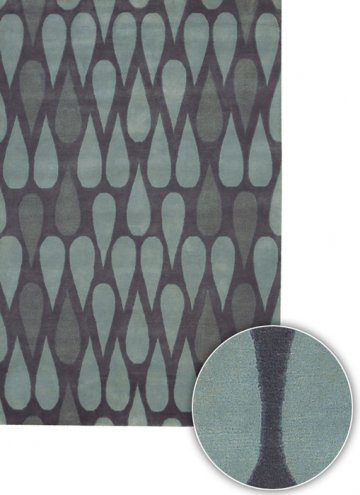 History Of Tibetan Rugs
Tibetan rugs and antiques cannot be properly introduced without a brief discussion of the Tibetan plateau. There is a fundamental
uniqueness that cannot be duplicated. That is, the plateau's isolation is indigenous to a few animals and plants. Because
of the high altitudes, usually well over 2500m., it is cold and the air lacks oxygen. Tibet is very unique- the Tibetan sheep
and yak can live only at high altitudes. Recently, these are being protected as endangered animals. Also indigenous to the
high altitude plateaus of Tibet, people have tried breeding the Tibetan Mastiff, and grow Blue Poppies, but have failed miserably
at lower altitudes. In 2006, Beijing, Tibetan Mastiffs were selling for $500,000 and out of the 200 or more brought to Beijing
only 4 were still living one year later. It is extremely cold and windy, and fairly obvious that the sheep and yak have been
essential to Tibetans from the beginning. The thick, strong wool is used for the clothing, rope, animal ornaments, blankets,
some of the monastery hangings and of course- rugs. The meat is dried and eaten. Butter, milk, yogurt, and cheese are made
too. The yak butter becomes the wax used in candles by the people and in the monasteries. Yak butter is the staple of the
diet in the form of tea and tsampa. Tibetans drink yak butter, mixed with a little tea leaves a minimum of twenty times a
day. As you can imagine it fattening, warm and has a distinct smell. Tsampa is a mixture of barley (similar to Japanese soba),
yak butter and a little tea. This is then molded over and over in the hand until a dough like ball is created. Traveling Tibetans
have always thought it essential to carry: a knife, gau (religious box with a tsa-tsa or statue of Buddha and Mantras), a
wooden tea cup, dried yak meat and a wooden container of tsampa. See the pictures to the right side. Walking through Tibet,
I see why this is, people share what they can with strangers. The region being just so barren, hospitality from both sides
is welcomed. Honestly, it was like living a history book. With a few exceptions, nothing was machine made. It didn't bother
me that the fruit and vegetables, outside goods like dishware, and cheap clothing are imported from China. Tibet and China
have been trading for years. Long before the cultural revolution, any antique silks you'd find in the monastery came from
the trade routes (ie. silk road), as did most of the dyes used in the carpets and as... fruits and vegetables. Most farming
tools, all wooden crafts were hand carved or hand spun on a manual lathe. Everything seemed to be antique. All traditional
garments were hand loomed.
 Every carpet or textile had a purpose. The traditional Tibetan home is colorful and uses textiles for all purposes. Rather
the floor is wood or dirt, like Japanese, Tibetans use the rug as a futon mat when sleeping or sitting. (Incidentally, the
Tibetan numbers and Japanese are the same sound, ichi, ne, san, she...) In some of the nicer homes, on the walls, rugs are
art. In such cold temperatures, beautiful hand woven wool blankets and felts are used for the people as well as the livestock.
The colors within the blankets range from a natural base with indigo blue stripes to a great variety of colors within a single
piece. The livestock also becomes decorated with tightly woven rope ornaments and small woven rugs. The ropes are woven by
the women as they tend to the sheep, intricate geometric patterns or Buddhist and animal motifs can be found in the earlier
pieces. Tibetan nomad tents are also woven wool using the natural dark wool of the yak. Every married woman’s
apron too was hand loomed. Using contrasting stripes in typical Tibetan colors, the apron will consist of three or four panels,
older pieces may also use tigma (a cross made by hand dye) I like to think of all this as folk art.
|
 |
|
|
 |
|
|
 |
|
|
|

